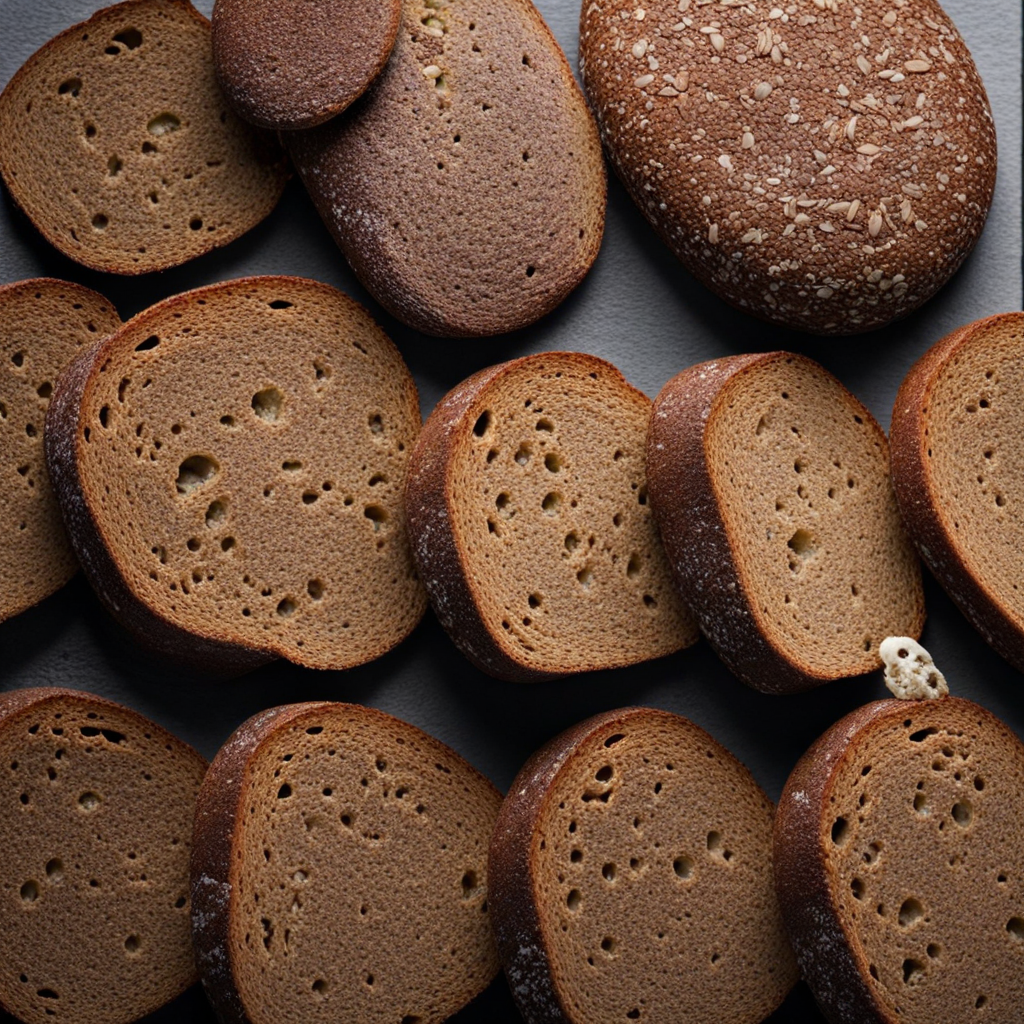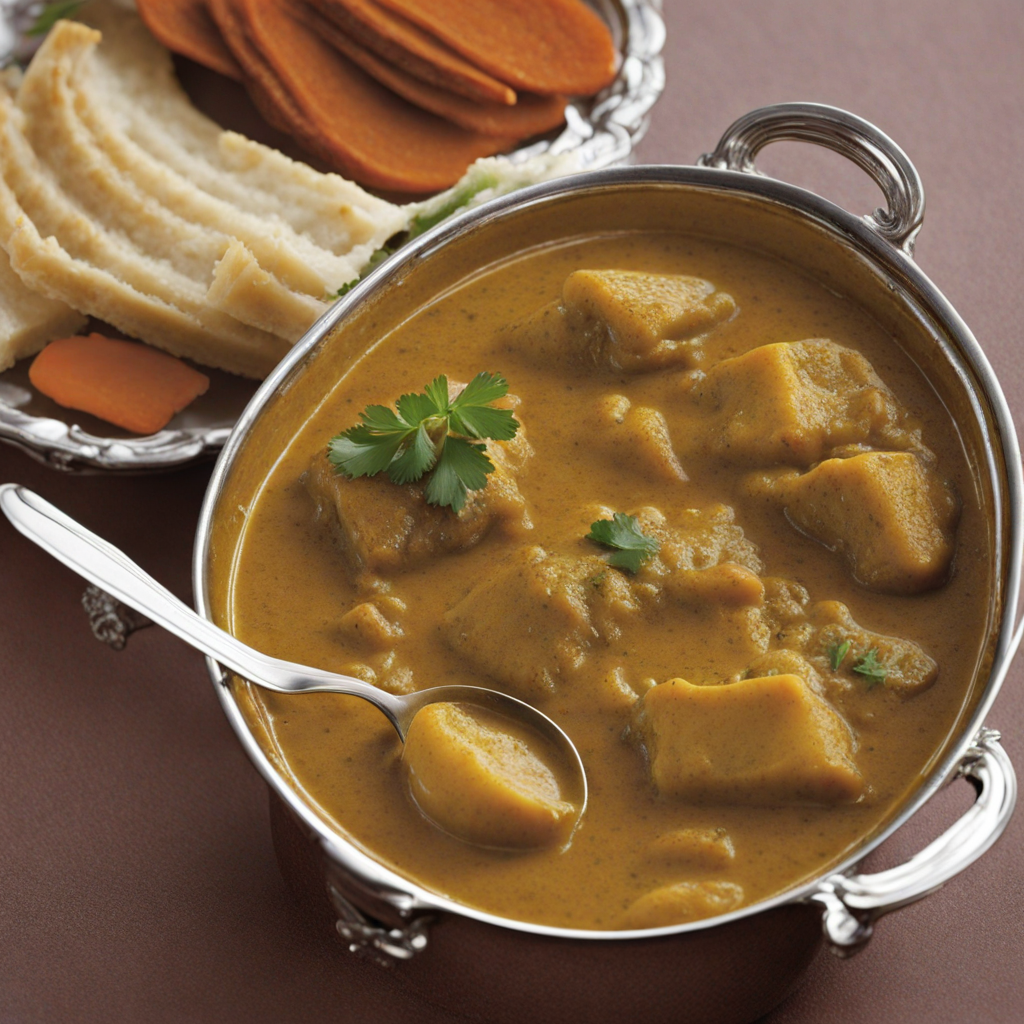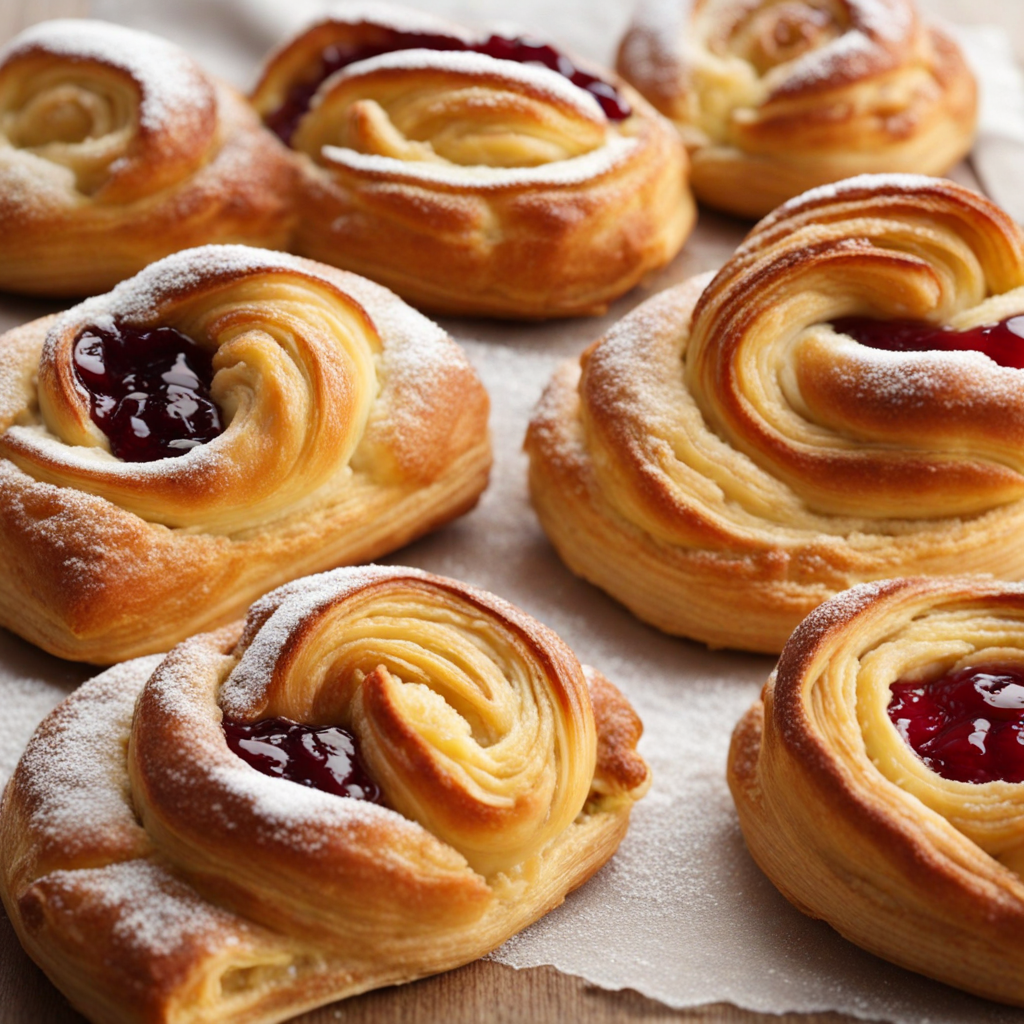Rugbrød
Rugbrød, a traditional Danish rye bread, is a staple in Denmark that offers a rich, hearty flavor and a unique texture that is unlike any other bread. Made primarily from whole grain rye flour, this dense bread is typically dark in color and often features a slightly sour taste due to the natural fermentation process involved in its preparation. The use of various seeds and grains, such as sunflower seeds, flaxseeds, or even oats, adds an additional layer of nuttiness and a satisfying crunch to each slice, making it a delight for those who enjoy robust flavors in their bread. The preparation of Rugbrød usually involves a long fermentation period, which not only enhances its flavor but also makes it incredibly nutritious. This bread is high in fiber, vitamins, and minerals, making it a wholesome choice for any meal. In Denmark, it's commonly served as an open-faced sandwich, called "smørrebrød," where the dense slices of Rugbrød act as a perfect base for a variety of toppings, including herring, cured meats, cheeses, and fresh vegetables. Each topping complements the bread's earthy flavor, creating a well-balanced and satisfying dish that showcases the simplicity yet sophistication of Danish cuisine. Rugbrød is more than just a food; it is a cultural experience that reflects the Danish commitment to wholesome, sustainable eating. Its chewy texture and slightly tangy taste make it an ideal companion for both savory and sweet accompaniments, from pickled fish to sweet spreads like jam. With its versatility, Rugbrød can be enjoyed at breakfast, lunch, or dinner, encouraging culinary creativity and exploration. For anyone seeking to discover new tastes, Rugbrød offers a delicious and authentic glimpse into Danish food traditions.
How It Became This Dish
The History of Rugbrød: Denmark's Iconic Rye Bread Rugbrød, or rye bread, is more than just a staple food in Denmark; it is a cultural emblem that embodies the nation’s agricultural heritage, social customs, and culinary traditions. With its dense texture, dark color, and nutty flavor, rugbrød has been a significant part of Danish cuisine for centuries, evolving alongside the people who make it. #### Origins and Early History The roots of rugbrød can be traced back to the Iron Age, around 500 B.C., when the cultivation of rye began in Europe. Rye was favored in Denmark due to its resilience; it could thrive in the country's cooler climate and poorer soils where other grains might fail. This adaptability made rye a staple crop, leading to its prominence in the Danish diet. The earliest forms of bread were simple flatbreads made from crushed grains mixed with water and cooked on hot stones or in ashes. As techniques improved, bread-making evolved into a more complex process. By the Middle Ages, rye was frequently milled into flour, allowing for the production of denser loaves that would become the precursor to modern rugbrød. In the 15th and 16th centuries, with the advent of the Renaissance and a growing interest in culinary arts, the variety and quality of bread began to improve. While white bread made from wheat flour was often reserved for the wealthy, rye bread became the bread of the common people, symbolizing sustenance and survival. #### Cultural Significance Rugbrød is more than just a food item; it embodies the spirit of Danish communal life. Traditionally, it has been associated with the idea of "hygge," a Danish concept that emphasizes coziness, comfort, and togetherness. Rugbrød is often central to family meals and gatherings, serving as a base for open-faced sandwiches known as "smørrebrød." These sandwiches are a celebration of Danish culinary creativity, with various toppings ranging from pickled herring and liver pâté to fresh vegetables and cheeses. In Denmark, bread is not merely a side dish but a main feature of the meal. The ritual of breaking bread together is a significant social custom, reinforcing bonds among family and friends. Rugbrød has also played a role in special occasions; it is often served during celebrations, holidays, and even funerals, reflecting its deep-rooted presence in Danish culture. #### Development Over Time As Denmark industrialized in the 19th century, the production of rugbrød began to change. The introduction of commercial baking and the mechanization of milling allowed for more standardized and mass-produced loaves. However, this shift also led to concerns about the loss of traditional recipes and artisanal techniques. The late 19th and early 20th centuries witnessed a resurgence of interest in traditional foods, spurred by the national romanticism movement that sought to celebrate Danish heritage. This period saw a push towards preserving traditional foods, including rugbrød. Home bakers began experimenting with recipes, often incorporating whole grains, seeds, and natural sourdough starters to create rich, flavorful loaves. Rugbrød's reputation as a healthy food option grew as well. Its high fiber content, low glycemic index, and nutrient density made it a popular choice among health-conscious consumers. In the 20th century, dieticians and nutritionists began to promote rye bread as a healthier alternative to white bread, further solidifying its place in the Danish diet. In contemporary Denmark, rugbrød is often celebrated for its artisanal qualities. Bakeries take pride in their unique recipes, which may include a variety of seeds such as sunflower, flaxseed, and sesame, alongside the traditional rye flour. Sourdough methods have become increasingly popular, leading to an explosion of flavors and textures in rugbrød. The resurgence of artisanal bread-making has fostered a new appreciation for the craft, with many Danes returning to their roots by baking bread at home. #### Rugbrød in Modern Times Today, rugbrød remains a beloved food in Denmark. It is commonly found in homes, cafes, and restaurants, often served alongside meals or as a snack. The rise of global culinary influences has also impacted rugbrød, inspiring new toppings and combinations that reflect both local and international flavors. In recent years, there has been a growing movement toward sustainability and local sourcing in the food industry, and rugbrød is no exception. Many bakers prioritize organic ingredients and traditional methods, often collaborating with local farmers to ensure the freshest grains. This commitment to quality and sustainability has helped to elevate rugbrød in the eyes of food enthusiasts both in Denmark and abroad. Additionally, rugbrød has gained recognition beyond Denmark's borders. As global interest in Nordic cuisine continues to rise, so too does the appreciation for rugbrød. It has made its way onto menus in gourmet restaurants around the world, often celebrated for its robust flavor and versatility. #### Conclusion Rugbrød is a quintessential element of Danish culture, reflecting the country's agricultural history, social customs, and culinary evolution. From its humble beginnings as a sustenance food to its modern status as a health-conscious and artisanal product, rugbrød tells a story of resilience, community, and innovation. As Denmark continues to embrace its culinary heritage while looking ahead to a sustainable future, rugbrød will undoubtedly remain a cherished symbol of Danish identity and togetherness for generations to come.
You may like
Discover local flavors from Denmark







